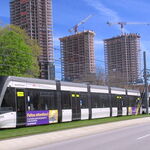crs1026
Superstar
Did ML ever say that? All I ever saw was a statement that ML was continuing to discuss VIA's needs. The consultation material for the Don Valley yard clearly shows trains parked right where VIA wants to be, and no diversion trackage.Perhaps ... during the consultation for that storage space, Metrolinx was clear that nothing about their plan stops VIAs use of that corridor.
I think what it indicates is that HFR (or HST) is years or decades away, with no serious plans to implement anytime soon. All the other signs point a similar direction, between the years of lack of approval in the budget, the lack of a single word of comment by the current minister, the lack of any recent comments from VIA. She's dead Jim ...
The conspiracy theorist in me thinks ML knows exactly what they are doing. VIA can have whichever routing it wants... just bring your chequebook. VIA gets to pay for parking for three GO trains somewhere else.
- Paul




